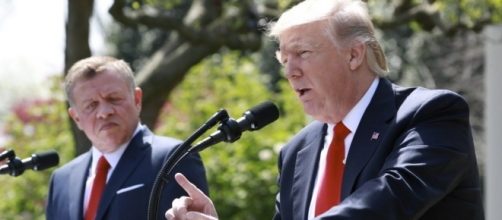The response from the international community to the Syria gas massacre that took place on April 4, has been one of great urgency. With a U.S. president who has only blasted out simplistic overtures to how he would respond to adversarial nations (with the exception of Russia), Syria would end up being the guideline by which he would act and eventually what would force his administration to restore some sense of normalcy.
Up until this now, the new U.S. Ambassador to the United Nations Nikki Haley had also been treating the UN as her adversary. With the Trump administration's budget proposal that looks to slash funding to UN humanitarian programs and essentially, cut as many of its ties from the international body as it can, there was no indication that she would eventually use the same body to send a loud signal to the Assad regime saying – like the former administration – they would not condone the killing of Syrian civilians.
To add, without a functioning State Department, we're left to gather up responses from various sources to get a broader view of what Trump's policy is towards Syria.
Dawn of similarities between Obama/Trump on Syria
President Trump blamed the former Obama administration during a press briefing on the White House lawn standing next to Jordan's King Abdullah for the problems in Syria, just as Press Secretary Sean Spicer did for the “red line” statement that President Obama made in 2013 after widely reported chemical attacks. As a sign of some normalcy, they've attributed the same blame as Republicans have over President Obama's red line statement ever since. Here is a clip from Washington Week from the same week the President made his statement.
National Security Advisor Susan Rice's harsh statement towards Assad via Twitter (pre-Trump) and the idea that Russia was putting pressure on Assad to allow the U.S. access to the sites of those chemical strikes. Since then, however, Russia has not provided the kind of assistance the U.S. was hoping for and have themselves even conducted strikes on Syrian civilians throughout 2016 as a sign of dominance against the outgoing Obama administration.
The Russian obstacle to Assad
Initially, Obama refused to build a coalition with Russia to conduct strikes against “terrorists” as they both had a very different view of who those terrorists are. For the most part, everyone largely agrees that the Islamic State should be eradicated from the region but the Syrian government and Russia view anyone against the Assad regime as terrorists.
Opposition against Assad began with the Arab Spring where Syrian civilians demanded a change in their government which began to massacre protesters. Since then, the civil war began and the U.S. has taken to supporting rebel forces working to topple Assad.
The U.S. allowed Russia to become the intermediary with Syria to remove chemical weapons which also poses a threat to neighbors such as Israel, who felt that if Assad were to be pushed up against the wall, he would use those chemical weapons against them. With the latest attacks, Russia has not settled fears by blaming rebel forces of storing chemical weapons which they say were hit in the strike which they say caused the deaths.
Russia is the source of arms for the Syrian government so their support for the Assad regime is clear.
Trump has admitted to wanting to work with the Russians against terrorists, but this time with American firepower likely contributing to the defense of Assad. But if the Trump administration's changing position against Assad is real and Nikki Haley's harsh rhetoric against the Russians during Wednesday's Security Council meeting for doing nothing is any indication of the U.S. response, then Trump will understand first hand exactly why President Obama “failed” in Syria.

